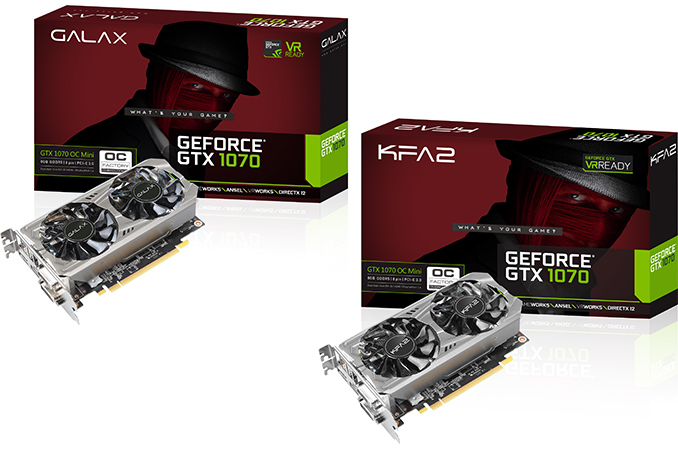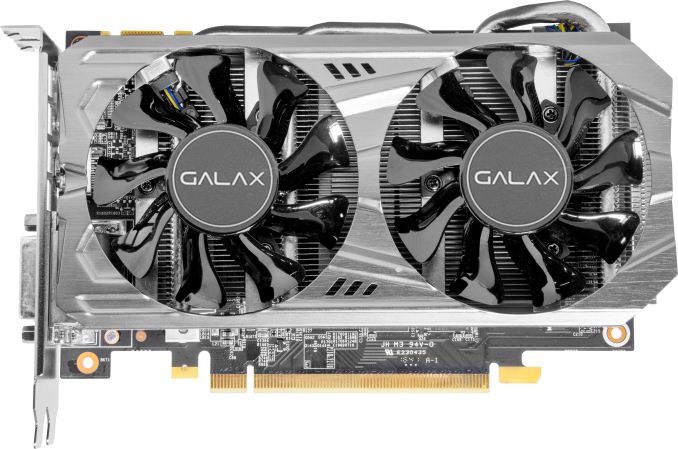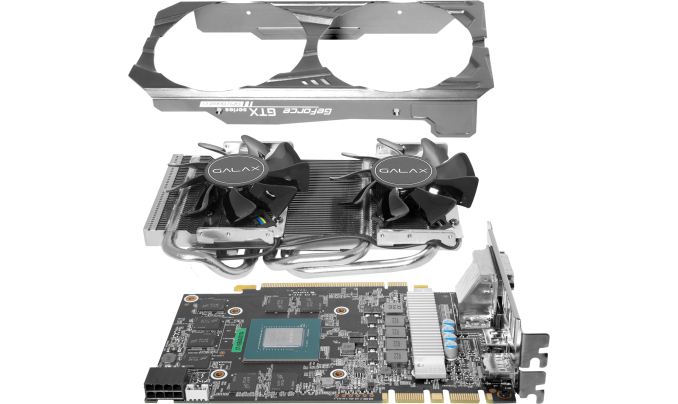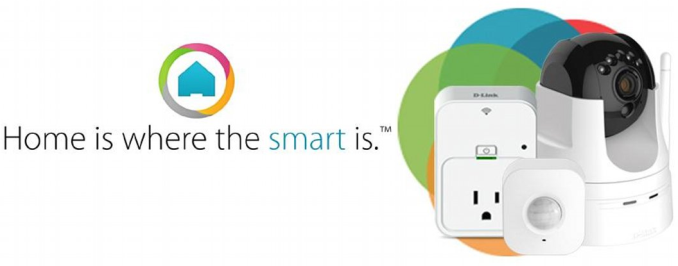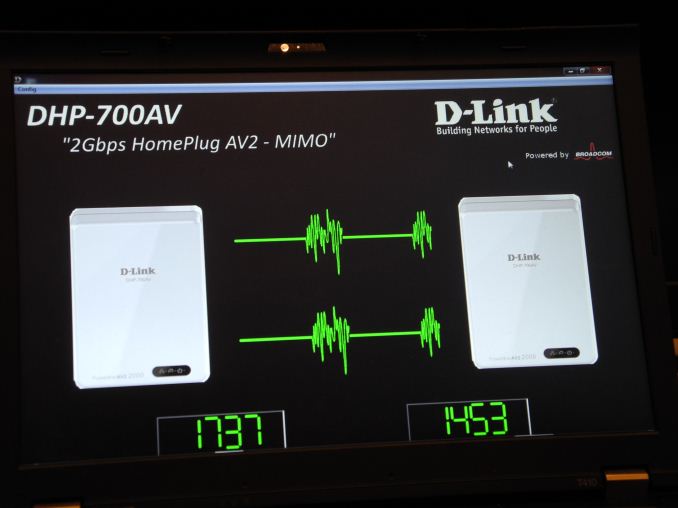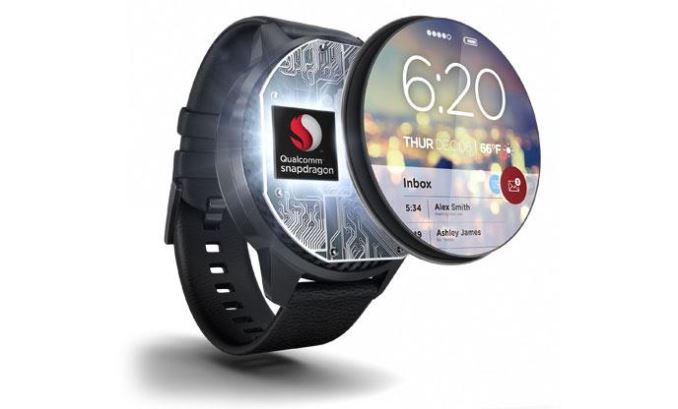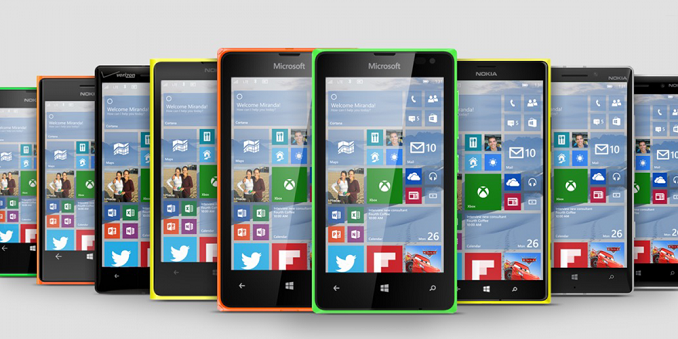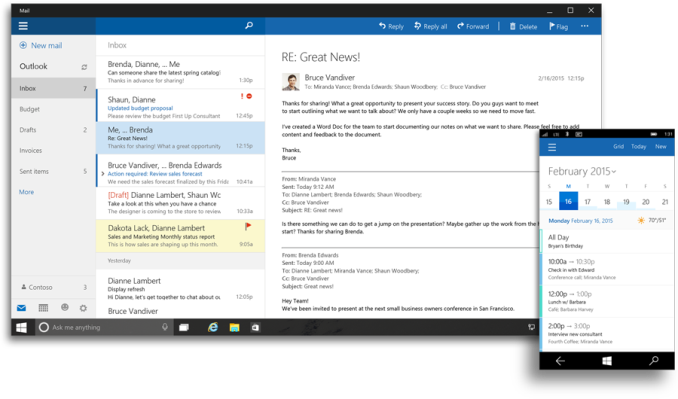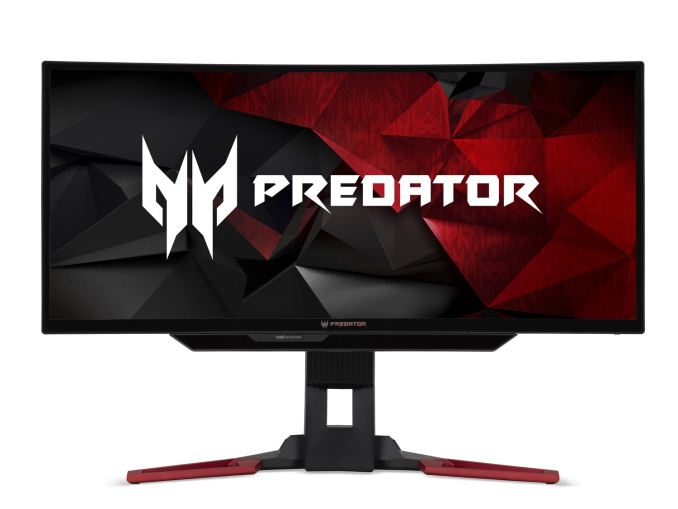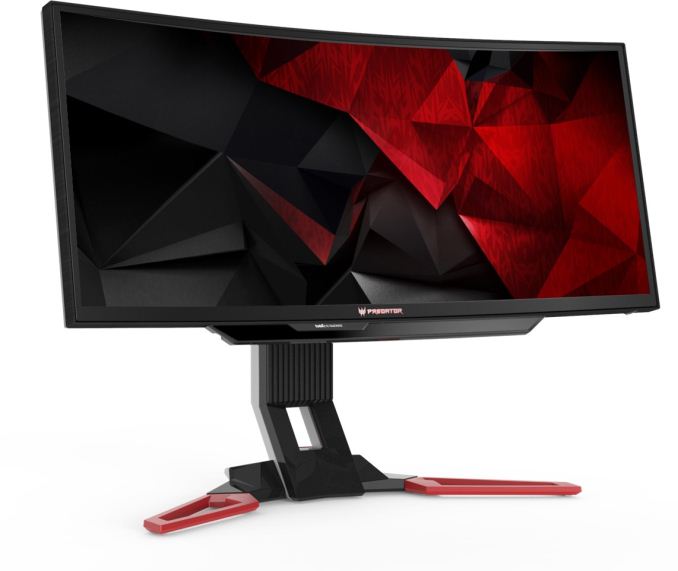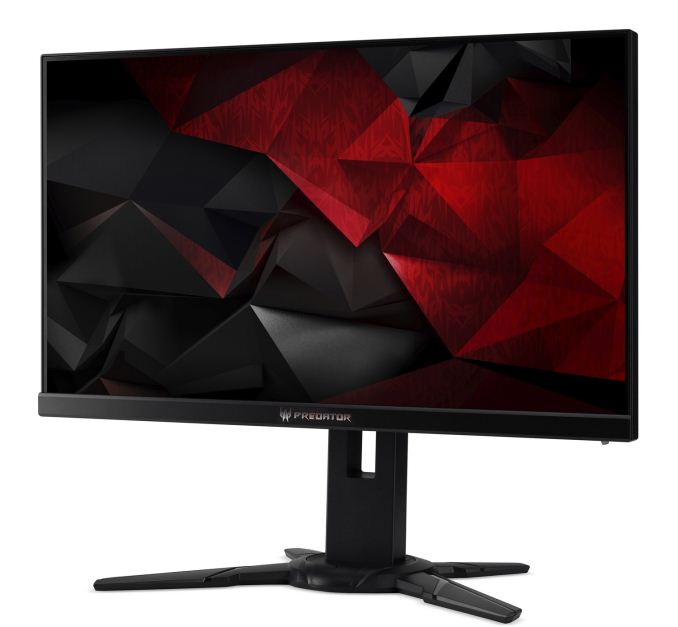Divers
-
Avast et AVG : les extensions de sécurité pour Firefox sont réintégrées
(Génération NT: logiciels)
Cela semble être la levée de l'interdiction. Pour Firefox, les extensions Avast Online Security et AVG Online Security ont signé leur retour.
-
Midazolam as a Non-Lethal Weapon
(Schneier on Security)
Did you know that, in some jurisdictions, police can inject midazolam into suspects to subdue them?
"There is no research guideline. There is no validated protocol for this. There's not even a clear set of indications for when this is to be used except when people are agitated. By saying that it's done by the emergency medical personnel, they basically are trying to have it both ways. That is, they’re trying to use a medical protocol that is not validated, not for a police function, arrest and detention," Miles said. "The decision to administer Versed is based purely on a paramedic decision, not a police decision," Slovis said. It's up to the officer to call an ambulance and determine if a person is in a condition called excited delirium. "I don't know if I would use the word diagnosing, but they are assessing the situation and saying, 'This person is not acting rationally. This is something I've been trained to recognize, this seems like excited delirium.' I don't view delirium in the field as a police function. It is a medical emergency. We're giving the drug Versed that's routinely used in thousands of health care settings across the country in the field by trained paramedics. I view what we're doing as the best possible medical practice to a medical emergency," Slovis said.
The biggest side effect is amnesia, which makes it harder for any defendent to defend himself in court. -
Apple ouvre à tous sa grosse chasse aux bugs de sécurité
(Génération NT: logiciels)
Juste avant la fin de l'automne, Apple ouvre comme promis son programme de bug bounty à tous les chercheurs en sécurité tiers. Il concerne notamment l'ensemble de ses systèmes d'exploitation, macOS compris.
-
Bon plan : WinX HD Video Converter Deluxe pour convertir, redimensionner ou télécharger des vidéos 4K
(Génération NT: logiciels)
WinX HD Video Converter est l'un des outils de traitement vidéo 4K les plus appréciés du marché, il compte aujourd’hui plus de 50 millions d'utilisateurs de par le monde. Une promotion de 50% pour les fêtes de Noël pourrait vous intéresser.
-
Windows 10 : un énigmatique pack pour les nouvelles fonctionnalités
(Génération NT: logiciels)
Une expérience Windows Feature Experience Pack ? Une mystérieuse apparition pour Windows 10, y compris dans le Microsoft Store.
-
Windows 10 par abonnement : retour de la rumeur avec Microsoft 365 (pour les particuliers)
(Génération NT: logiciels)
Microsoft n'a pas fait mystère d'un abonnement Microsoft 365 pour le grand public. Avec Windows 10 compris ? C'est le retour de la rumeur.
-
Microsoft offre un nouveau logo à Windows 10
(Génération NT: logiciels)
Microsoft avait annoncé une refonte visuelle majeure de l'ensemble de ses produits et services, et voilà que l'on découvre les logos en question, y compris celui de Windows 10.
-
Windows 10 et Windows Update : les pilotes dans les mises à jour optionnelles
(Génération NT: logiciels)
Reprise de la publication de préversions de Windows 10 dans le canal Fast nouvelle formule. Les mises à jour optionnelles de drivers avec Windows Update se confirment.
-
Un système d'exploitation from Facebook en préparation
(Génération NT: logiciels)
Pour soutenir ses ambitions dans le matériel, Facebook développe son propre système d'exploitation avec pour objectif de ne pas dépendre de concurrents comme Google avec Android.
-
Les pires mots de passe de 2019
(Génération NT: logiciels)
Et voilà le beau classement des pires mots de passe de 2019 concocté comme de tradition par SplashData.
-
Mises à jour et téléchargements de la semaine
(Génération NT: logiciels)
Retrouvez notre résumé des mises à jour et téléchargements récemment proposés.
-
Mises à jour et téléchargements de la semaine
(Génération NT: logiciels)
Retrouvez notre résumé des mises à jour et téléchargements récemment proposés.
-
Mises à jour et téléchargements de la semaine
(Génération NT: logiciels)
Retrouvez notre résumé des mises à jour et téléchargements récemment proposés.
-
Google Chrome : un bouton de contrôle multimédia intégré
(Génération NT: logiciels)
Le navigateur Google Chrome a droit à un bouton dédié pour le contrôle multimédia. Son déploiement avait été annoncé pour la version stable actuelle. Il est possible de le retrouver si besoin dans les flags.
-
Palit Launches GeForce GTX 1070 for Mini-ITX PCs with GALAX and KFA2 Brands
(AnandTech)
Palit has quietly released a GeForce GTX 1070-based video card for Mini-ITX systems under the GALAX and KFA2 brands. The product uses a unique PCB design and will be the third GeForce GTX 1070 graphics adapter for Mini-ITX PCs on the market.
Just like competing GeForce GTX 1070s in an ITX form-factor, the GALAX GeForce GTX 1070 OC Mini and KFA2 GeForce GTX 1070 OC Mini graphics cards offer the same level of performance as a full-size GTX 1070. Both boards carry NVIDIA’s GP104 GPU (with 1920 stream processors, 120 texture units and 64 ROPs) that operates at 1518/1708 MHz (base/boost) as well as 8 GB of Micron’s GDDR5 memory running at 8 Gbps. While the card runs a bit faster than NVIDIA’s reference frequencies (+12/25 MHz for base/boost frequencies), its TDP remains the same at around 150W.
Both video cards use the same PCB design with a 4+1 VRM and one 8-pin PCIe power connector, which is inline what NVIDIA’s reference boards offer. The VRM uses solid-state chokes, whereas its MOSFETs are cooled down by a separate heatsink. The main cooling system features a copper base, three thick nickel-plated heat pipes, a relatively large aluminum radiator, two fans and a metal cover. In fact, the cooler is larger when compared to cooling systems of some other Mini-ITX graphics cards and the adapter itself is a bit longer when compared to direct rivals (195/181 mm with/without a bracket, whereas a mini-ITX motherboard is 170mm).
The dimensions of the GALAX/KFA2 GeForce GTX OC Mini cards are not going to become a problem in the vast majority of situations where a good performance mini-ITX gaming PC is concerned, however some users aiming at very small form-factor builds may end up finding it a tight squeeze.
As for connectivity, Palit decided to offer something different from NVIDIA’s reference designs and appeal to owners of older monitors (who use more than one of them) with DVI interface. Both cards are equipped with one DisplayPort 1.4 connector, an HDMI 2.0b port as well as two dual-link DVI-D ports. By contrast, NVIDIA-designed boards come with two DPs, an HDMI and only one DVI header.
Specifications of GeForce GTX 1070 for Mini-ITX PCs GALAX GeForce GTX 1070 OC Mini KFA2 GeForce GTX 1070 OC Mini ZOTAC GeForce GTX 1070 Mini GIGABYTE GeForce GTX 1070 Mini-ITX NVIDIA
GeForce GTX 1070
Founders EditionStream Processors 1920 Texture Units 120 ROPs 64 Core Clock (MHz) 1518 1531 - 1556 1506 Boost Clock (MHz) 1708 1721 - 1746 1683 Memory Capacity 8 GB Type GDDR5 Clock 8 Gbps TDP 150 W Length 195 mm 210 mm 169 mm 280 mm Launch Date Q1-2017 12/2016 7/2016 6/2016 Launch Price unknown $395 unknown $449 Palit did not announce MSRP and ETA of its GALAX GeForce GTX 1070 OC Mini and KFA2 GeForce GTX 1070 OC Mini boards, but given that they are listed at respective web sites, expect them to show up on the shelves in the coming weeks. Meanwhile, as examples of other high-end Mini-ITX graphics cards show, the GPU manufacturers do not tend to charge a much more for an SFF card and prices of such adapters are very close to NVIDIA’s MSRPs (which for the GTX 1070 is $379).
Gallery: GALAX GeForce GTX 1070 OC MiniRelated Reading:
-
OnePlus : un Bug Bounty pour la sécurité de sa plateforme
(Génération NT: logiciels)
Comme promis après la fuite de données de novembre, OnePlus inaugure un programme de Bug Bounty pour notamment renforcer la sécurité de son site.
-
Accidents provoqués par l'utilisation d'un iPhone par un conducteur: Apple se défend
(MacBidouille)
Vous vous souvenez probablement de la procédure lancée contre Apple en fin d'année dernière. Une famille ayant perdu un enfant lors d'un accident poursuivant la société pour ne pas avoir intégré dans son mobile un de ses brevets bloquant l'usage de l'appareil lors de la conduite d'un véhicule. Or, le chauffard qui avait percuté la voiture de cette famille était en train d'envoyer des SMS depuis son iPhone.
Ce n'est pas la seule affaire où Apple a été attaquée pour des raisons identiques. Macrumors rapporte qu'Apple est intervenue pour se défendre dans une action en recours collectif identique sur le fond où elle est accusée de mettre en avant ses profits avant la sécurité des usages de la route en n'installant pas de système pour bloquer ses appareils lors de la conduite des véhicules.
Apple s'est défendue assez logiquement en indiquant ne pas être responsable de ce que font ses clients de leurs appareils.
La jurisprudence va dans ce sens et considère que le conducteur reste l'entier responsable des éléments qui ont pu provoquer un accident suite à sa distraction.Apple a toutefois mis en place une fonction permettant de basculer les appareils iOS sur un mode "ne pas déranger" quand ils détectent un mouvement rapide signe d'un déplacement en voiture dans iOS 11.
-
Fin de Windows 7 : une alerte en plein écran mi-janvier
(Génération NT: logiciels)
La fin de support de Windows 7 est pour le 14 janvier 2020. Le 15 janvier, Microsoft le dira au plus grand nombre d'utilisateurs concernés avec l'affichage d'une notification en plein écran.
-
Collection #1 : 773 millions d'adresses email et 21 millions de mots de passe en fuite
(Génération NT: logiciels)
Près de 773 millions de comptes compromis avec une " fuite de fuites de données " qui a fait l'objet d'une divulgation publique.
-
D-Link's Networking Solutions at CES 2015
(AnandTech)
D-Link had one of the most exciting networking suites at CES 2015. The fact that they seem to be having the lead when it comes to adopting Broadcom's latest MU-MIMO solutions played a major role. Having been behind the hub for the Staples Connect product, they also have enough know-how to aggressively tackle the connected home market. Without further digression, we take a look at the various products that D-Link had on display at their CES suite.
The ULTRA Series of Routers
D-Link's revamped router lineup consists of three main products:
(a) DIR-890L AC3200: This is the standard XStream configuration from Broadcom with two sets of 5 GHz radios and one 2.4 GHz radio. Speeds of up to 1.3 Gbps on each 5 GHz radio and 600 Mbps on the 2.4 GHz radio justify the AC3200 tag. This model is shipping now for $310.
(b) DIR-885L AC3100: This is based on Broadcom's recently announced 4x4 MU-MIMO solution (BCM4366 + BCM47094). The maximum WLAN PHY rate is 2165 Mbps for the 5 GHz band and 1000 Mbps for the 2.4 GHz band.
(c) DIR-895L AC5300: This combines the Broadcom 4x4 MU-MIMO solution with the XStream concept - putting 2x 4x4 MU-MIMO capable radios together gives 2.1 Gbps on each of the 5 GHz bands along with 1 Gbps on the 2.4 GHz band to justify the AC5300 name.
D-Link is also set to launch a 3x3 802.11ac USB Wi-Fi adapter in the DWA-192/R. Obviously, with the AC1900 rating, it supports connection via USB 3.0 for maximum performance. Pricing for everything other than the DIR-890L is yet to be decided. Shipping is slated for Q2 2015.
The industrial design of all the products in the ULTRA series is quite striking. It is definitely fitting for the revamp considering that D-Link effectively was an also-ran for the previous two generations of 802.11ac products.
Powerline Networking
On the PLC front, D-Link is again at the forefront with one of the highest performing powerline kits in the market. The PowerLine AV2 2000 (DHP-701AV) Gigabit starter kit is based on the Broadcom BCM60500 HPAV2 MIMO chipset.
D-Link also updated their AV2 1000 DHP-601AV product. Unlike the DHP-701AV, this is not MIMO-capable. Both products are scheduled to launch this quarter, with the kits coming in at $130 and $80 respectively.
The Smart Home Play
As I mentioned in the introduction to this piece, D-Link has been accumulating expertise in the connected home market, thanks to being the hub manufacturer for the Staples Connect program. The Smart Home is an interconnection of automation, entertainment and security aspects in a typical house. In order to tackle this market, D-Link is having two plays in mind - DIY security kits and a set of Wi-Fi / Z-Wave sensors along with a hub for the DIY home automation market.
The DIY security kit comes in two flavours - the HD edition and the HD Pan and Tilt Edition.
The kits come with a motion sensor, a smart switch (the one that D-Link has been shipping for about a year now) and a HD IP camera (with pan and tilt capabilities in the latter edition). The IP camera in the first package (HD edition) is the DCS-935L capable of recording H.264 clips at 720p30. It is one of the first 802.11ac-capable IP cameras that I have seen in the market.
The mobile apps ecosystem for the above kit is the same as that for the DIY home automation kit. The IP cameras have their own ecosystem with the mydlink Cloud - recordings get uploaded when motion is detected. Fortunately, local storage with a D-Link NVR is also possible.
The DIY Security Kit - HD Edition (DCH-101KT), DIY Security Kit - HD Pan & Tilt Edition (DCH-301KT) and the HD Wi-Fi Camera (DCS-935L) will go on sale later this quarter with pricing set at $190, $230 and $120 respectively.
The home automation play from D-Link is quite strong this year. At the heart of the ecosystem is the Connected Home Hub (DCH-G020 - Q2 2015 - $80) which acts as a Wi-Fi / Z-Wave bridge with a wired connection to the router. It is AllSeen compatible. Two Z-Wave sensors (Open/Close - DCHZ110 - Q2 2015 - $40 and Motion Sensor - DCH-Z120 - Q2 2015- $50) and two Wi-Fi sensors (water sensor - DCH-S160 - Q2 2015 - $60 and siren - DCH-S220 - Q2 2015 - $50) round out the lineup. The mydlink Home App controls all these devices, sets rules and allows creation of scenes - the typical home automation play.
My only complaint as a power user / person who likes to tinker around is that the ecosystem is closed - It is not currently possible, for example, to even control the Wi-Fi Smart Plug with the Logitech Harmony Home Automation hub.
The last two years have been a bit quiet for D-Link. So, it was great to see them bouncing back with very interesting products. My only wish is for them to recognize the value of a open home automation platform. On the router side, shipping the AC5300 DIR-895L in Q2 would definitely bring D-Link back in contention as a market leader.
-
Qualcomm Announces Snapdragon Wear 1100 SoC For Wearables
(AnandTech)
Qualcomm introduced the Snapdragon Wear 1100 SoC today at Computex 2016. Intended for wearable devices, such as fitness trackers, smart headsets, and connected watches for children, it features a single ARM Cortex-A7 CPU running at up to 1.2GHz and a fixed-function GPU for rendering simple 2D user interfaces. It's interesting that Qualcomm chose to stick with the A7 rather than use its replacement: the Cortex-A35. According to ARM, the A35 uses 10% less power while boosting performance between 6-40% at the same frequency and on the same process. This could simply be a matter of timing or just Qualcomm's familiarity with the A7.
The Snapdragon Wear 1100 is a compliment to the Snapdragon Wear 2100 SoC that Qualcomm announced back in February 2016, and is meant to run lean, Linux-based operating systems instead of Android or Android Wear, which require the performance of the 2100 to deliver richer, more graphical experiences like those in typical smartwatches.
The Snapdragon Wear 1100 integrates a Category 1 LTE modem that supports LTE FDD, LTE TDD, TD-SCDMA, and GSM networks with global frequency band support for keeping devices connected independent of a companion device such as a smartphone. Customers can also choose to incorporate Wi-Fi and Bluetooth connectivity options. Another feature crucial for safety monitoring applications that use geo-fencing is the inclusion of Qualcomm’s iZat Gen 8C location engine that supports the GPS, GLONASS, Galileo, and BeiDou positioning satellite networks. Location accuracy and speed are improved by augmenting GNSS with Wi-Fi and cellular networks.
Qualcomm Snapdragon Wear SoCs Snapdragon Wear 1100 Snapdragon Wear 2100 SoC Cortex-A7 @ 1.2GHz (256KB L2)
fixed-function GPU4x Cortex-A7 @ 1.2GHz
Adreno 304 (OpenGL ES 3.0)Process Node 28nm LP 28nm LP RAM LPDDR2 LPDDR3-800 MT/s Display Simple 2D UI Up to 640x480 @ 60fps Modem Qualcomm (Integrated)
2G / 3G / 4G LTE (Category 1 10/5 Mbps)Qualcomm X5 (Integrated)
2G / 3G / 4G LTE (Category 4 150/50 Mbps)
Connected version onlyConnectivity 802.11b/g/n/ac, BT 4.1 LE, GPS/GLONASS/Galileo/BeiDou
(Wi-Fi and BT optional)802.11b/g/n (2.4GHz), BT 4.1 LE, NFC, GPS/GLONASS/Galileo/BeiDou, USB 2.0
Connected and Tethered versionsThe Snapdragon Wear 1100’s package size is 79mm², including the modem, RF transceiver, and PMIC, and is manufactured on a 28nm LP process. Also included in the package is a low-power sensor hub and a hardware cryptographic engine, features that further reduce power consumption. When paired with a 350mAh battery, Qualcomm claims the Snapdragon Wear 1100 allows for up to 7-days of LTE standby.
Wearables featuring the higher-performing Snapdragon Wear 2100 SoC should be available in the second half of 2016, while the Snapdragon Wear 1100 is available to ODMs starting today.
-
Windows 10 Insiders: New Windows 10 Mobile Build Now Available For Phones
(AnandTech)
It was almost two months ago that Microsoft released the first build of Windows 10 for phones. The first build was very basic, and was missing a lot of the Windows 10 functionality that will be coming. If you did want to try it out though, it was limited to just a handful of devices which means that it had a very small audience. Today that is changing, and the new build is available on almost every single Nokia/Microsoft phone made with the big exception of the high end Lumia 930/Icon, as well as the just released Lumia 640XL. Both devices require some new scaling code added to support the display size and resolution.
But with this build, we really get our first glance at Windows 10 on phones. Many of the core apps have been updated to have a new experience. Project Spartan, which we first saw in the latest Windows 10 desktop build, is now replacing Internet Explorer on the phone as well. Considering the performance delta between mobile CPUs and desktop CPUs, the performance improvements that we have measured in Project Spartan should make an even bigger difference. I will run one of my devices through some benchmarks to see what the new build will offer.
Also new is the Outlook Mail and Outlook Calendar apps, which are universal Windows apps and will be the same ones found on the desktop too, although they are not yet on the current desktop build, so we will get our first look at them on the small screen. They have a new UI, and the calendar and mail can both be accessed while in the same app rather than having to switch between two. Outlook will now leverage Word for email composition as well, which should drastically improve the experience on mobile.
The Phone and Messaging apps are also new. Both have new designs, but the Skype integration coming to the Messaging app does not appear to be part of this build. The People and Maps app are also redesigned.
All of these apps can now be accessed through a new App Switcher, which is accessed the same way as the old one – hold the back button – and it now supports landscape and offers a grid layout on larger devices which have extra screen real estate.
For anyone who wants to try it out, you must be part of the Windows Insider program, and install the Windows Insider app on your phone, and then sign in with the same MS account as you signed up for the Windows Insider with. Remember though that this is all pre-release software, so you may not want to install this on your personal phone. There are a list of known bugs as well, so be sure to check out the source link if you are interested in installing the new Technical Preview.
Source: Microsoft
-
OpenBSD 3.8: Hackers of the Lost RAID
(BSD DevCenter)
 Every six months, the OpenBSD team releases a new version of their OS. It's time for OpenBSD 3.8. Federico Biancuzzi recently interviewed the core developers about new features and improvements, as well as ongoing struggles to find support from hardware vendors. Here's what to expect when you upgrade.
Every six months, the OpenBSD team releases a new version of their OS. It's time for OpenBSD 3.8. Federico Biancuzzi recently interviewed the core developers about new features and improvements, as well as ongoing struggles to find support from hardware vendors. Here's what to expect when you upgrade. - Running Commercial Linux Software on FreeBSD (BSD DevCenter)
-
Acer Introduces A Pair Of Predator Gaming Displays
(AnandTech)
Today Acer is taking the wraps off of a couple of new products at CES 2017, and to start things off, Acer is unveiling some new gaming displays under their Predator brand. First is the 30-inch Acer Predator Z301CT, featuring a curved 21:9 panel with built-in eye tracking, and second is the Predator XB2 line, with 240 Hz refresh rate.
Both models announced today feature Acer GameView technology, where you can toggle among three customizable display profiles without having to use the OSD menu, and the include features like dark boost, aim-point assistance, and the ability to select the on-screen refresh rate.
They also feature Acer EyeProtect which has a blue-light filter, and ComfyView dimming.
Acer Predator Z301CT
Acer is announcing the first 21:9 curved monitor with built-in Tobii eye tracking, in the Predator Z301CT. The ultrawide 21:9 display has a 1800R curvature, and 178° viewing angles. With a resolution of 2560x1080, it’s not going to set awards for display density at just 92 DPI, but features like a 200 Hz refresh rate should help them with their target market. The display also features NVIDIA G-SYNC, and two 3-Watt speakers with DTS Sound.
The most interesting feature though is the built-in Tobii eye tracking, which is now supported in over 45 game titles according to Acer. Game sound and graphics will adjust based on where the player is looking, and eye tracking can also be used for after the fact training to see where you were looking when killed.
The stand features swivel and tilt of -5° to 25°, as well as vertical adjustment of 4.7-inches. For those that prefer a monitor arm, the display also supports 100mmx100mm VESA mounting.
The Z301CT features DisplayPort 1.2a, HDMI 1.4, and four USB ports, as well as audio output.
Acer rates the display at 100% sRGB coverage, with a 300 nit brightness and 3000:1 contrast, although the contrast sound like it must be some sort of dynamic number. It is an 8-bit panel VA panel.
The Z301CT will be available in February from $899.99, and in EMEA for €899.
Gallery: Acer Predator Z301CTAcer Predator XB2 Series
The second set of displays from Acer is actually two displays, with the XB25Q being a 24.5-inch model, and the XB272 a 27-inch version. Both displays feature a 240 Hz refresh rate, along with NVIDIA G-SYNC and ULMB (Ultra Low Motion Blur).
Both displays are 1920x1080 resolution TN panels, which isn’t unexpected at this sort of refresh rate. Acer claims 100% sRGB coverage though, and 1000:1 contrast, but both seem like best-case numbers.
For input, there is DisplayPort 1.2, HDMI 1.4, and four USB ports, as well as audio output.
The stand offers -5° to 20° tilt, 45° swivel, and 4.5 inches of height adjustment, along with a 90° pivot.
The XB2 Series will be available in February for $549.99 for the 24.5-inch model, and $679.99 for the 27-inch model.
Gallery: Acer Predator XB2 SeriesSource: Acer
-
DDoSing a Cell Phone Network
(Schneier on Security)
Interesting research:
Abstract: The HLR/AuC is considered to be one of the most important network elements of a 3G network. It can serve up to five million subscribers and at least one transaction with HLR/AuC is required for every single phone call or data session. This paper presents experimental results and observations that can be exploited to perform a novel distributed denial of service attack in 3G networks that targets the availability of the HLR/AuC. More specifically, first we present an experiment in which we identified and proved some zero-day vulnerabilities of the 3G network that can be exploited by malicious actors to mount various attacks. For the purpose of our experiment, we have used off-the-shelf infrastructure and software, without any specialized modification. Based on the observations of the experiment, we reveal an Advanced Persistent Threat (APT) in 3G networks that aims to flood an HLR/AuC of a mobile operator. We also prove that the discovered APT can be performed in a trivial manner using commodity hardware and software, which is widely and affordably available.
The attack involves cloning SIM cards, then making multiple calls from different handsets in different locations with the same SIM card. This confuses the network into thinking that the same phone is in multiple places at once.
Note that this has not been tested in the field, but there seems no reason why it wouldn't work.
There's a lot of insecurity in the fact that cell phones and towers largely trust each other. The NSA and FBI use that fact for eavesdropping, and here it's used for a denial-of-service attack.
-
Windows 10 : Microsoft arrête le support de la version originale le 9 mai
(Génération NT: logiciels)
Une fin de support pour Windows 10 à partir du 9 mai prochain. Uniquement pour la version 1507, soit la version originale de Windows 10.
-
Aucun problème de stock pour les HomePod
(MacBidouille)
Ces derniers temps, on a plutôt été habitué par Apple à des tensions sur les stocks de nouveautés.
Ce n'est pas le cas pour les HomePod.
Un de nos contacts a fait le tour des points de vente Apple à Londres, et tous en ont en grande quantité, y compris les Apple Store où l'on peut en retirer sans réservation.
-
xkcd on Cryptanalysis
(Schneier on Security)
Good xkcd comic on the difference between theoretical and practical cryptanalysis.
-
GENESIS: NSA Exploit of the Day
(Schneier on Security)
Today's item from the NSA's Tailored Access Operations (TAO) group implant catalog:
GENESIS
(S//SI//REL) Commercial GSM handset that has been modified to include a Software Defined Radio (SDR) and additional system memory. The internal SDR allows a witting user to covertly perform network surveys, record RF spectrum, or perform handset location in hostile environments.
(S//SI//REL) The GENESIS systems are designed to support covert operations in hostile environments. A witting user would be able to survey the local environment with the spectrum analyzer tool, select spectrum of interest to record, and download the spectrum information via the integrated Ethernet to a laptop controller. The GENESIS system could also be used, in conjunction with an active interrogator, as the finishing tool when performing Find/Fix/Finish operations in unconventional environments.
(S//SI//REL) Features:
- Concealed SDR with Handset Menu Interface
- Spectrum Analyzer Capability
- Find/Fix/Finish Capability
- Integrated Ethernet
- External Antenna Port
- Internal 16 GB of storage
- Multiple Integrated Antennas
(S//SI//REL) Future Enhancements:
- 3G Handset Host Platform
- Additional Host Platforms
- Increased Memory Capacity
- Additional Find/Fix/Finish Capabilities
- Active Interrogation Capabilities
Status: Current GENESIS platform available. Future platforms available when developments are completed.
Unit Cost: $15K
Page, with graphics, is here. General information about TAO and the catalog is here.
In the comments, feel free to discuss how the exploit works, how we might detect it, how it has probably been improved since the catalog entry in 2008, and so on.
L'actualité de cette partie est agrégé automatiquement à partir d'autres sites.
Contenus ©2006-2024 Benjamin Poulain
Design ©2006-2024 Maxime Vantorre
